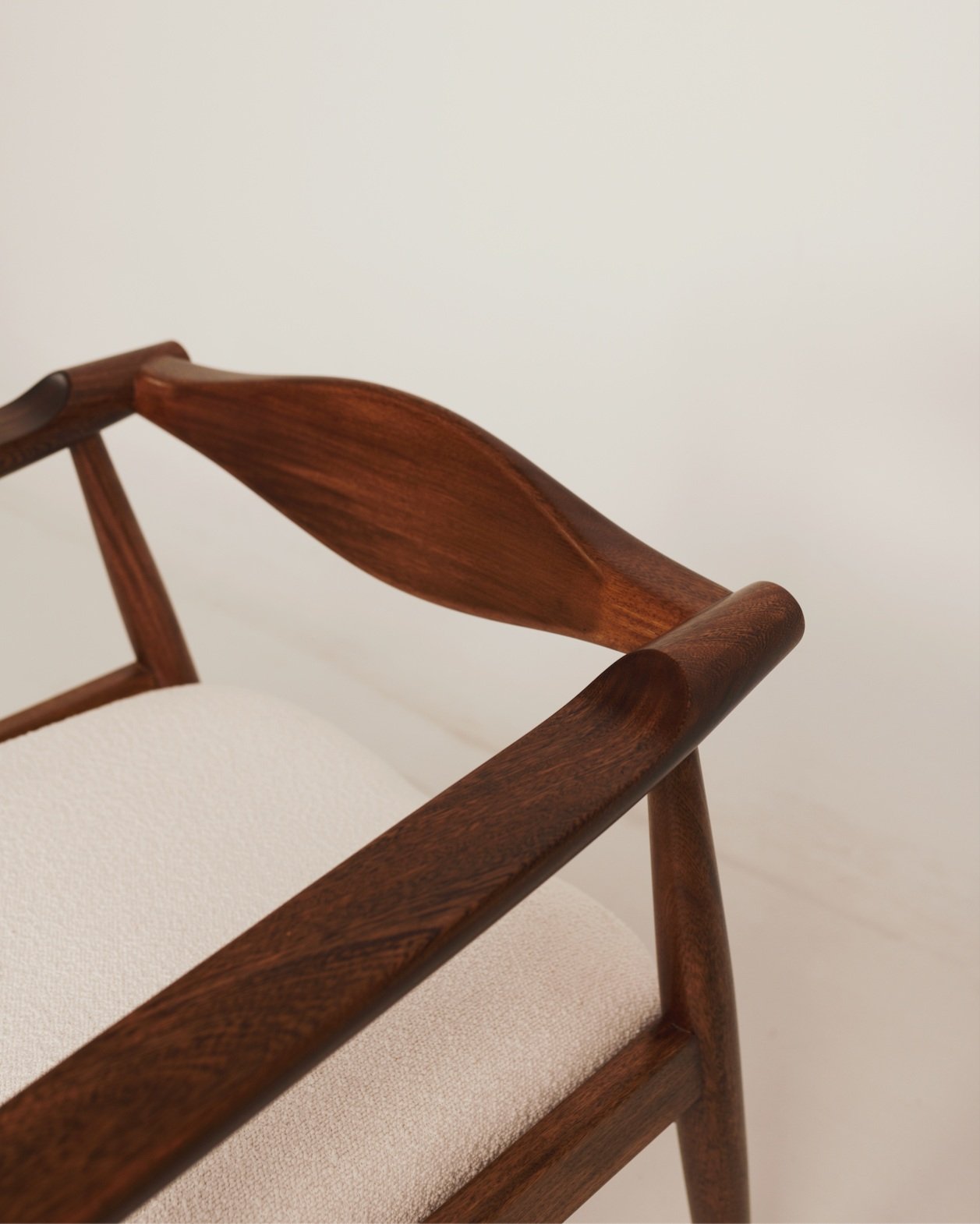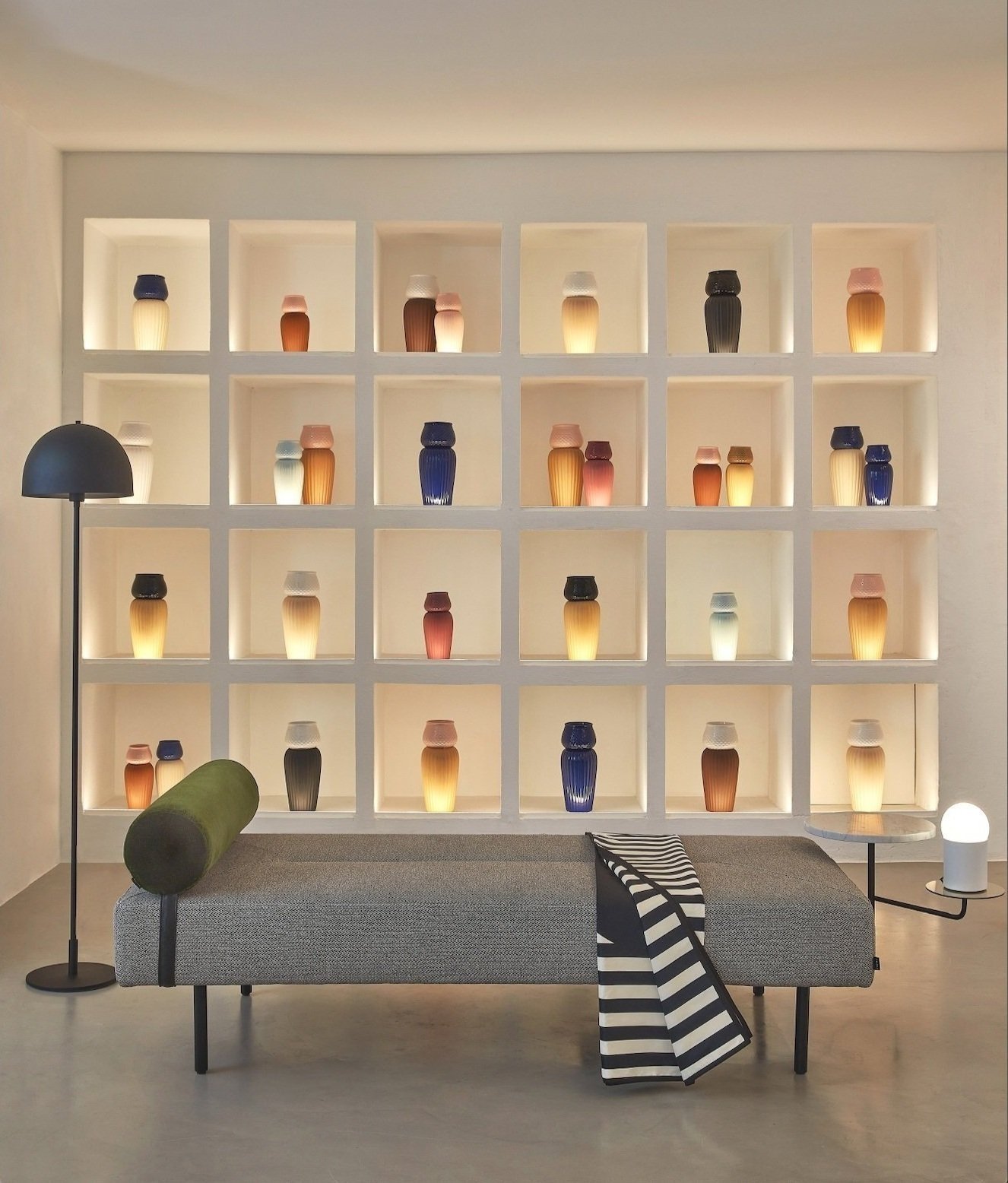On transforming madness into utilitarian objects with Folies
Folies is a Colombian furniture brand that merges modernist design with local culture references. Born from the idea of transforming madness into everyday life objects they concieved a funny yet sophisticated brand. Jimena Londoño, the co-founder, spoke with us about it.
Interview: Sofia Estrada Images: Mónica Barreneche, Boris Nieto
Can you please talk about how Folies was born and where does the name come from?
After several years of doing interior architecture, I wanted to deliver a finished product taking a design assignment out of context and more specifically targeting a particular audience who was interested in my aesthetics and the resolution of everyday objects. Very soon this idea based on architecture came together with the brilliant mind of Eugenia, my partner, an industrial designer with impeccable aesthetics, and together we created a brand whose principles are based on that conversation between aesthetics and functionality and that is very much fueled by the spirit of modernity.
The name Folies arose from an investigation that I carried out in my university years, on the greatest deconstructivist work of the architect Bernard Tschumi, the Parc de La Villette, in which there were these enormous habitable structures that were the deconstruction of a cube and were called that way, Folies (which also translates to caprice or madness in French). The whim of taking one thing and turning it into something else, taking a cube and turning it into park equipment such as ice cream parlours, flower shops, etc. Take a bunch of materials and turn them into a utilitarian object that will later serve a function. That's Folies.
Past, present and future are part of Folies’s DNA, how is this represented in your creative process?
The past has always been the origin, the inspiration, the reference to shake up ideas and bring them to life. The past has given us the pillars on which to act in terms of the concepts that must be taken into account when designing such as proportion, function, material, character, etc. The present is our source of inspiration, today's lifestyle, today's needs, the functions that objects have to supply today. They are also the resources and technologies that we have at our disposal today. And finally, the future is always present in our creative process because we design with the useful life of objects in mind, making them stay here for a long time, accompanying people's lives in the very long term. All this connected to the sense of responsibility to create a sustainable creative project.
How is your selection process for materials and textiles? Where does the inspiration come from?
I will answer the other way around, the inspiration has always been everyday life and the way in which objects are part of people's daily routines, different ways of life, human activity. To that extent, the primary criterion for choosing materials is to think about the way in which we want people to interact with objects. Determining what the object-person relationship will be, determines many of the decisions about materials: weight, temperature to the touch, colors, etc. Textiles are a great example of this, they are in permanent contact with the skin and can generate endless sensations depending on their characteristics, according to the energy that we want to give to the objects and the use that we decide to give them, which one is the most appropriate.
What are your main modernist architecture referents? How do you portrait them in your designs?
There are many but I would have to mention Mies Van der Rohe, Le Corbusier, Charles and Ray Eames, icons of this period that revolutionised the way of doing design, who approached design in a very honest way, responding purely to people's needs and the immediate resources of the time, which always expressed what they wanted to express. They were avant-garde, disruptive, and recursive. In our brand, it is implicit in working with the available resources, in that resourcefulness and ingenuity necessary to execute a good design with what we have at hand.
How do you think Colombian culture contributes to your brand?
“Colombian culture” embraces many things, but a trait that is very present in Folies DNA is that permanent desire to celebrate life so typical of our culture. This constant search for joy and enjoyment inspires us to create atmospheres that foster those meeting and fun spaces with family and friends. It is thinking about the offer of happiness that a piece of furniture can deliver, being the staging, the "set" of a happy life.
How do you feel Colombia has received your designs? Do you think Folies is different from what is currently being done there?
We wanted to be a bit disruptive and break with the scheme of what people used to buy. Our goal has always been to produce objects of desire and when you fall in love with an object –for the object itself, you don't question it, you just fall in love. We design so that people fall in love with objects and connect to such a level that they do not want to question them and do not hesitate to include them in their home, no matter how different they are. Color is a great example of that. Our invitation was always to bet for more color. Bogotá in particular is a cold city and people did not dare much with color, our proposal took a bit people out of the box.
Who does Folies talk to? Which is the target audience?
Folies speaks to those people who are not afraid of what others say, to people who are very authentic and want to please themselves, who only want to be happy and use the objects they surround themselves with for that purpose. To people who want to leave a legacy. To people for whom objects are a living being that accompanies long life.
Tell us about the collaboration between Folies and Jaime Gutiérrez Lega, can you please talk about who he is and his role in design? How was the experience working with him?
The experience with Jaime was a pleasant and casual encounter. One of the first pieces that we restored in our beginnings, the Olivia Chair, belonged to Jaime and discovering this was very special. Was very gratifying having the possibility of knowing first hand the reason to be of the chair, from this author, who in 1963 outlined the first features of modernity in Colombia. Last year we did the concession for five more chairs that are now part of our brand and are a tribute to everything that Jaime (and Folies) promotes: design at the service of people's comfort, efficiency when producing, carrying out perfect exploded views, understanding and applying the concept of anthropometry... Jaime made us fall in love again with the reason to be of an object.
Have you ever decorated a whole space? If yes, how was the experience?
We believe that spaces are the union of different visions and criteria, that is precisely what tells the story of the people who inhabit it. It is that singularity of the syncretism of different bets that makes a space interesting, because it brings different elements into dialogue. We have contributed to spaces with many pieces, such as the Click Clack hotel, the We Work offices, but always added to other firms that complete the design.
Which is your favourite Folies piece? Which one do you think is the most iconic? And which one can’t be missing in the living room?
My favourite piece is the Drawer x9, inspired by the secreter, this a very Japanese piece of furniture full of compartments that confuses a bit and hides the magic of what happens inside. Every drawer you open is a surprise. I love everything that happens with that object.
The most iconic is without a doubt the Olivia Chair, it has modern features that draw very well our origins as a brand, the level of comfort, the cabinetry work, it is also the favourite of our customers.
And finally, what cannot be missing in a room: I think a mirror, a sun mirror, a reflection that confuses you, that allows you to see things through, mirrors are a very fun game and for me it is ideal to always include it in your spaces.






